Antique Jewelry Restoration
Written by Annabelle
March 8, 2019
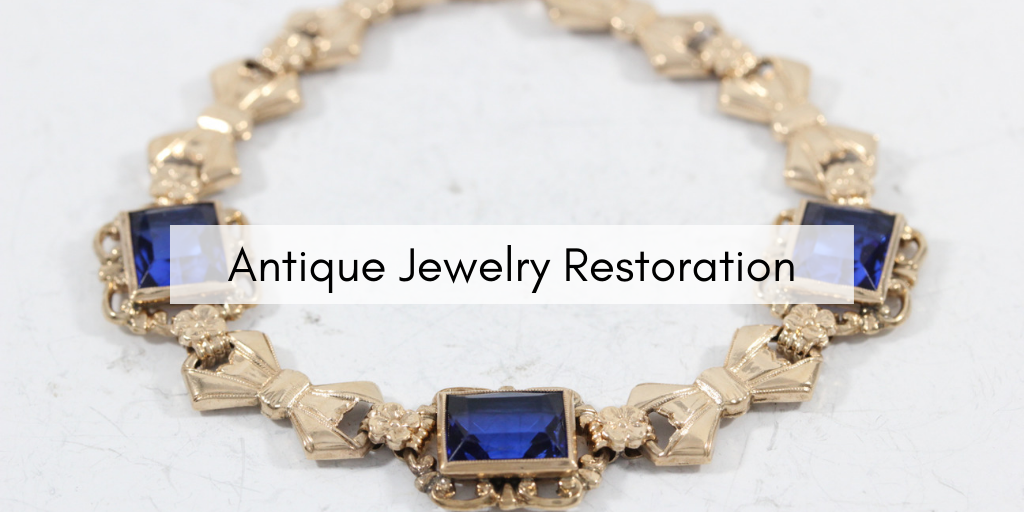
Perhaps you have something that your grandpa passed down to you, or you got lucky with a lot of jewelry at an auction. Either way, you have some old, antique jewelry that looks grimy and tarnished, and you're not too sure how to go about fixing it up without damaging it. Read more to learn about antique jewelry restoration.
1.Evaluate the piece

This ring has a cracked shank that needs repair.
Upon receiving an antique piece of jewelry, the jeweler gives it a thorough examination. This is to assess what needs to be done; is it just dirty? Does it need a stone replaced? Is it broken in any way? The jeweler takes note of what needs to be done and then moves on to examining the material and structure of the piece.
This part of the antique jewelry restoration procedure is very important, because it affects how the repair is performed. For instance, non-precious metals such as brass and copper are difficult to work with, as they may burn if heat is applied, or react badly to polishing. Materials such as glass, plastic, and soft gems can be damaged as well, which means that the jeweler will have to remove and reset them after the repair. Finally, items that are plated or contain enamel will need to be touched up, as the repair process may remove the original color.
2.Repair any damage necessary
Once the evaluation is finished, the repair work begins. Here is a list of common antique jewelry restoration work:
- Ring Shank Repair: Rings, out of all the different types of jewelry, receive the most wear and tear since they're worn on the hands. After centuries of wear, the shank, or the band of the ring, can break from previous resizing work and abrasion. The jeweler can repair this damage in several ways. If the damage is a mere crack, he may choose to simply solder the crack closed, by adding a dollop of metal that has a low melting point. If the shank itself has become extremely thin over time, the jeweler may opt to completely remove the shank and do either a half-shank or full-shank replacement by attaching a new, thick strip of metal to the remaining parts of the ring to create a stronger band. While this strengthens the integrity of the piece and makes it ready for daily wear, a shank replacement will remove any original hallmarks or engravings on the interior of the ring.

This antique sapphire ring came in with a very thin shank . We replaced it with a 2mm band.
- Setting Repair: The setting, or the metal that holds down a gemstone, is one of the most damage-prone areas in antique jewelry. Whether it's a prong setting or a bezel setting, these tiny strips of metal wear down incredibly fast, especially if the item is made out of a softer material such as high-karat gold. When the setting wears down, the chances of losing a stone are much greater. In order to fix this issue, the jeweler will repair the setting with solder and rebuild any worn or missing components until the stone is securely set.

A bezel setting (left) and a prong setting (right) with visible damage.
- Stone Replacement: The most common issue with antique jewelry is missing stones. Over decades of passing from owner to owner, the stones will fall out at some point, leaving behind a sad empty setting. In order to replace the stone, the jeweler gives the piece to a lapidary, who measures the setting and supplies or cuts a new stone for the piece. The jeweler then sets the stone into the setting, restoring its original look.

A gold-filled enamel locket that was missing all of its seed pearls before replacement.
3.Refurbishing and Touch-up
After the repair work, the item is sent to refurbishing and touch-up.
- Polishing: Any rough spots of metal, scratches, or tarnish are buffed away by a polisher. If the item is made from a certain kind of metal that does not take too well to the polishing procedure, the polisher will only perform a quick once-over to avoid damaging the piece.
- Cleaning: Jewelers use two industry-grade cleaners: the ultrasonic cleaner and the steam cleaner. The ultrasonic cleaner is a tank of water or solution that submerges the item and bombards it with bubbles, knocking out all the dirt. The steam cleaner is a nozzle of high-pressure steam that blasts the piece of jewelry, but does not scratch or harm the surface. These cleaning methods are suitable for all types of jewelry except for items that have glue-set stones or photographs.
- Plating & Enameling: If an item was plated or enameled, this stage of the process restores the color. Pieces that need plating are placed into a tank containing water and metal salts. Electricity runs through the water, fusing the metal (typically gold) to the surface of the item. Depending on the thickness required, the jewelry stays in the tank for a certain amount of time.
Pieces that need enameling are given the initial enamel application, and then the item is “baked” or “cured” in order to harden the enamel to a durable state.
This ring was missing enamel; after the stones were tightened and secured, enamel was reapplied to the missing portions.
Now you're prepared for your own antique jewelry restoration; check out any of our featured services below to get started today!

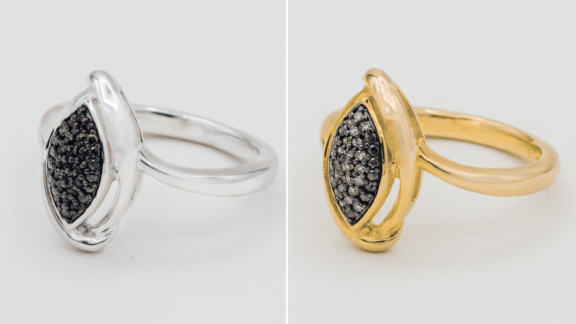
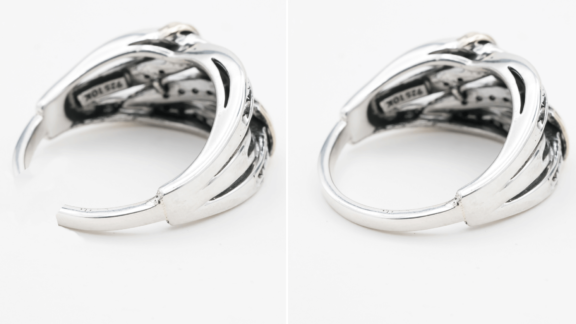

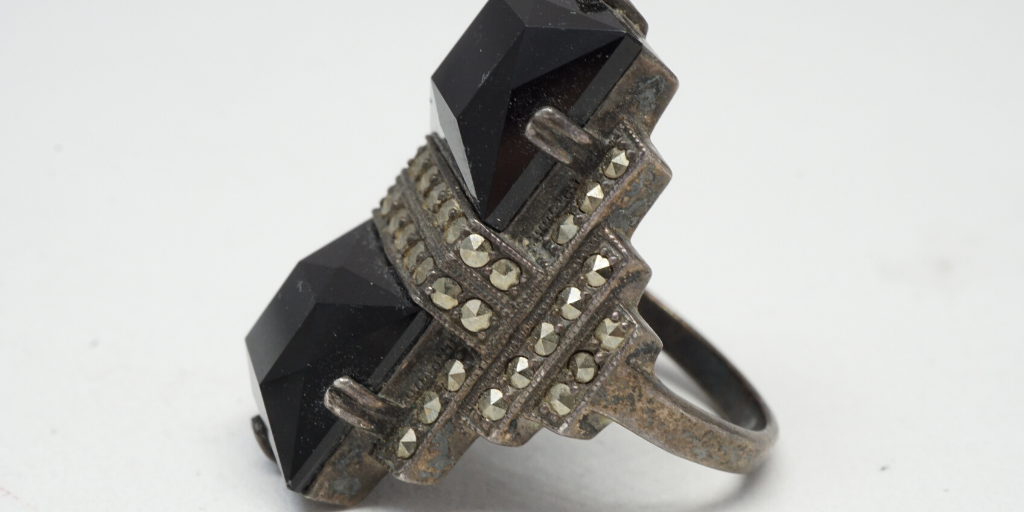
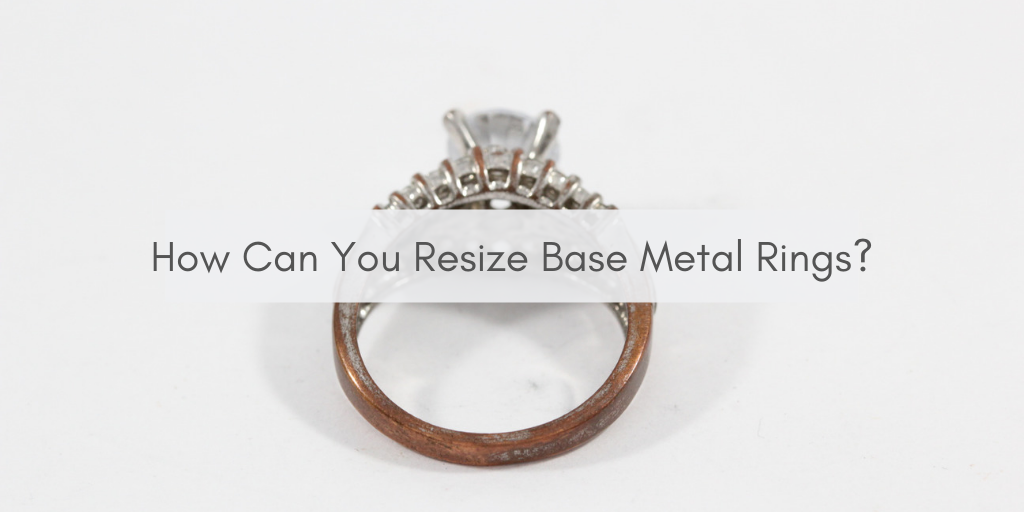
I have a spinner ring that I love. Quit spinning, had a jeweler suppose to have replaced the gears. Has 2 spinners. One spins the other does not. Carry back where I had it supposedly fixed, the jeweler had passed away and shop was closed. Loved this ring dearly. It was a conversation. Do you work on spinner rings? I would appreciate if you could let me know concerning this matter, I am sincerely. June Horton.
Hi June,
We’d love to take a look at the piece! I’ve sent you an email in response.
Hi, I have several 1900-1930’s perfumes and compacts that are sterling guilloche and enameled with damage to the enamel. Can you repair this type of thing? Thank you.
Totally up our alley – I’ve followed up with next steps via email 🙂